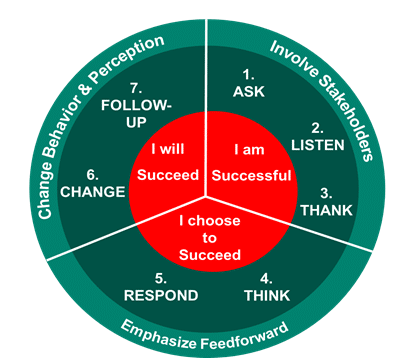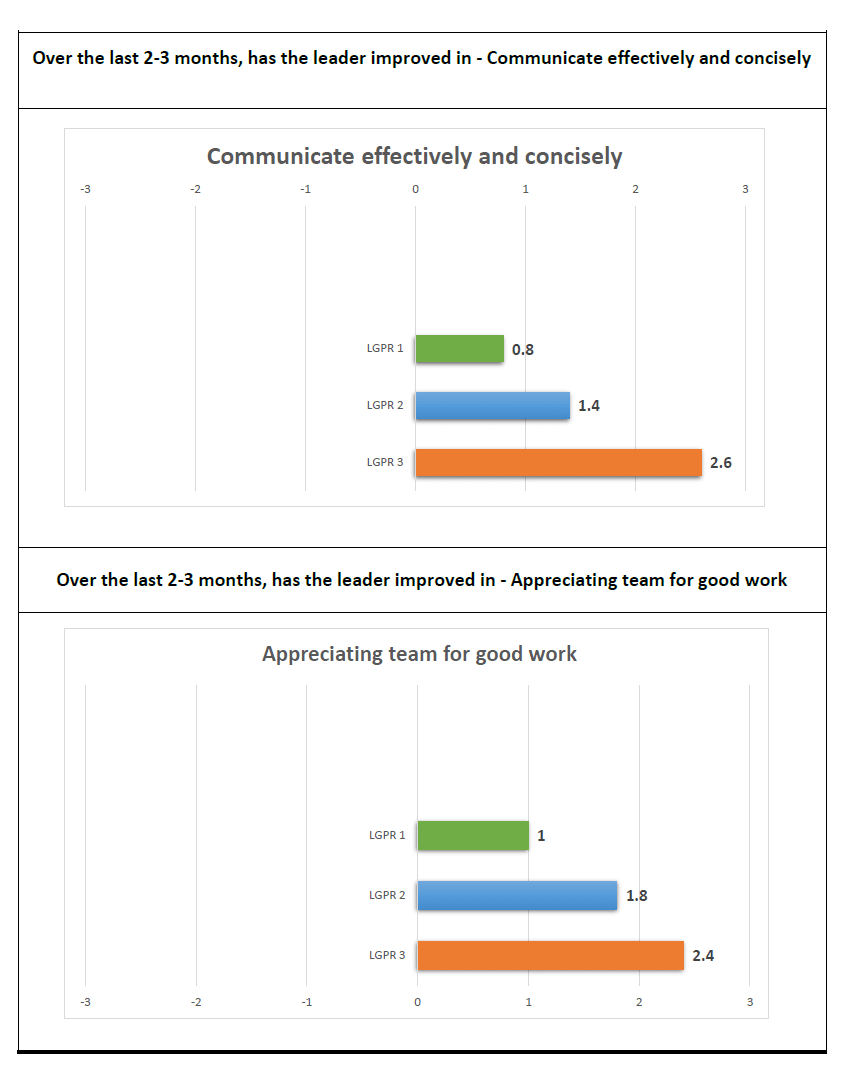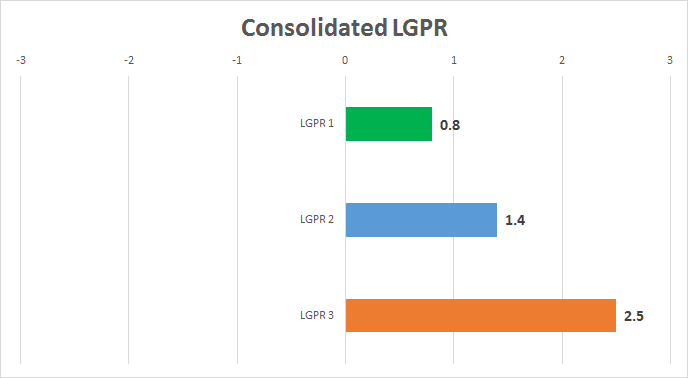
Guaranteed measurable results delivered for our FMCG client
Here is the real-life case study of one of our clients who approached us with specific issues and how we delivered measurable results for them. This case study outlines a sample of challenges growing organizations face and how our stakeholder centered coaching process helped deliver behavior change and a high-performance culture. While you are reading the case study, you may see your organization facing similar issues and the leaders facing similar challenges. We deliver guaranteed and measurable results through our stakeholder coaching process.
Company – FMGC/food manufacturing with over 4000 crores in yearly turnover
Issues as brought by the management
• Poor communication and lack of candid feedback
• Inter and Intra team friction and silo mentality
• Idiosyncratic and derailing behaviors of otherwise good leaders
• Need to building trust, cohesion, and accountability
• impact on performance due to these issues (delays, poor quality or service, conflicts, etc.)
Goal – Leadership development with a focus on some of these specific areas
• Better team cohesion – within the individual team and cross-functional teams
• Continuous change and improvement
• Improve leader’s idiosyncratic and derailing behaviors
• Create a high-performance culture
Who was included?
Thirty-two (32) leaders at 3 major locations – across North and West India. At Ahmedabad, Delhi NCR, and Jaipur
Although the regional offices were located in these three metro areas, the plant locations were scattered around these metros – some up to 400 km away.
Level of leaders
• Top leadership Managing director and executive directors
• Functional heads (HR, finance, production, etc.)
• Plant heads at n number of locations spread across north and west India
Methodology and Process for guaranteed measurable results
A dual coaching model supported by online platform access.
Our client had conducted internal leadership training programs before. They had also sent individual leaders to external managerial and leadership programs as well as conferences. Their experience was that there was a little change in the leaders’ on-job behaviors as a result of these internal or external programs. This is quite common in organizations, and multiple research studies have confirmed that training programs’ effectiveness is not good. One size fits all” training programs don’t work. Ultimately, organizations have practically zero return on their training investment – as neither the leader’s behaviors at work change nor do the leader’s team’s performance improves.
Read the article on the Fundamental problem with Executive Education.
Unlike group training, coaching has several advantages.
• Individual assessment
• Individual growth and improvement areas
• Customized content
• Privacy and confidentiality
• No time away from work (usually 1 to 1.5 hours of coaching per month)
Establishing a baseline
To know and confirm how each leader was – in terms of their strengths and improvement areas – we conducted the following assessments.
Objective feedback
A 360 DF for each leader, which offered quantitative and objective feedback from the leader’s team members
Although competency framework and assessments can also be used, the 360 degree feedback tool is better as it gives a comprehensive perspective of the leader’s behaviors.
To get the leaders on board, we conducted individual sensitization sessions with the leader. This helped them see the benefit of feedback and coaching and answer any queries or concerns. This is a critical step. Once the leader is onboard and sold on the benefits, the rest of the process becomes a lot smoother.
We used the Global leadership assessment – GLA 360 survey. It is designed by Dr. Marshall Goldsmith, who is considered the number 1 leadership thinker and coach. It measured the leaders on 15 competencies of today’s leaders in the multicultural and often global environment. Anonymous feedback is collected from the leader’s stakeholders at all levels – boss, subordinates, and peers. For specific leaders (depending on their functions), we also included and collected feedback from the vendors and/or customers.
If you’d like to know more about GLA 360 or download a sample report, here is the link to two articles
Everything you ever wanted to know about executive coaching
Global leadership assessment (GLA 360) the best 360 degree assessment
Subjective feedback
In addition to the GLA 360, we also arrange 15-30 min interviews with each of the leader’s stakeholders. This was to collect subjective feedback on the leader, especially on the leader’s style and the respondents’ relationship and interaction with the leader. This provided qualitative data and more subjective feedback compared with the more objective feedback of the GLA 360. All the conversations were kept anonymous to get honest feedback.
Report Generation
Once all respondents had provided the objective and the subjective feedback, we generated two reports.
1. A comprehensive report of the 360 degree feedback
2. A compilation of feedback from team members’ interviews
Debriefing session with each leader by an external coach – us
The following were the desired outcomes of the debriefing session with the individual leader.
○ Awareness and acceptance of the feedback
○ Moving the leader through the grief cycle (from initial shock or anger to being open to taking action to improve)
○ Identify a few strengths and a few improvement areas from the report – as seen by the leader’s team members.
○ Decide and finalize 2 areas to improve through working with the coach.
○ Get an agreement on the improvement areas from the leader’s boss and program sponsor (usually HR and/or top management)
The dual coaching process supported by the online platform access

The diagram above is the stakeholder centered coaching process we used. This process is pioneered by Dr. Marshall Goldsmith and used worldwide to coach more than one million leaders worldwide, from executives in startups to Fortune 500 companies. Several studies have shown that this process has an effectiveness rate of 95%, which is simply unbelievable.
Read the article – Marshall Goldsmith stakeholder centered coaching in India delivers 95% success rate.

These are the phases in the coaching process with guaranteed measurable results.
Phase A – Determine leadership growth areas through objective and subjective feedback. As discussed, phase A started with the leader’s sensitization session and ended with the leader determining her two growth areas.
Phase B – Involve SHs and solicit their help in the leader’s developmental journey
Phase B consists of a 7 step monthly process repeated for 12 months. This cyclical process includes getting feed-forward (suggestions for the future)
- Ask
- Listen
- Thank
- Think
- Inform and involve
- Change
- Follow up
This entire process takes about 1.5 to 2 hours of the leaders’ time and consists of two separate coaching sessions. Hence the dual coaching process.
1. The first part of the coaching session is with the stakeholders (the 7 step process described above). It takes about 45 minutes to 1 hour time.
2. The second part of the coaching session is with the leader alone. Here the coach helps leaders overcome internal obstacles and issues in the behavior change in complete confidentiality. This also takes about 45 minutes to 1 hour time.
Here are several benefits of the dual coaching process
Time and resource-efficient – The leader doesn’t have to leave work for several days and probably travel to attend leadership training or executive education programs. The process only takes 1.5 to 2 hours of the leader’s time per month. The rest of the focus is on applying the insights and learning to change on-job behavior with the leader’s team.
Virtual friendly – The coaching sessions can be done in person or virtually. Part of it was done remotely for our client – due to pandemic using MS Teams and Zoom meetings.
Highly effective – Instead of some intellectual knowledge gained in training, this process allows the leader to immediately put the learning and insights into practice for on-job behavior change. A study of 86,000 leaders over four continents showed this process to be 95% effective.
Read the article Is your leadership development effective? Or is the money going down the drain?
The leader’s voluntary and public commitment to both the team members and the coach adds multiple accountability layers and aids leadership growth. The dual coaching supports the leader in a 1 on 1 setting and addresses issues that the leader probably can’t or won’t discuss in a group setting.
Phase C – This phase consists of measurements through anonymous mini-surveys called Leadership growth progress reviews or LGPRs. There are 3 progress reports (LGPRs), usually during the 5th, 8th, and 11th months of the one-year coaching engagement. The LGPRs include ratings and observations/comments from the team members
• Has the leader improved in the 2 areas he/she selected?
• Anonymous rating of the leader by the stakeholders on a scale of -3 to +3
• What specifically has the leader done to improve (or not)
The LGPRs provide a concrete measurement of the leader’s growth in the selected leadership growth areas. What makes it even more important is the fact that the ratings and observations are anonymous and given by the leader’s own team members. If they anonymously provide positive ratings, that is the acid test of the coaching process’s effectiveness.
Webinar on Google’s Secret Recipe to Build a High-Performance Team
Continuous support via access to an online platform
A scientifically designed online platform to aid accountability, support, and constant communication with the coach. Although insights and ideas happen during the coaching sessions, behavior change happens in between the coaching sessions. Leaders are busy and juggle multiple priorities. The leadership development plan may take a back seat to work urgencies. The online platform is the perfect solution.
Scientifically designed an online platform to help you form habits and achieve leadership growth. Here are some of the highlights and the benefits of the online platform
• Acts as a daily co-coach and accountability partner
• Learning, reflection, and accountability
• Create customized actions, worksheets, and metrics for you
• Timely reminders of actions and activities – as per the leader’s needs
• Create projects, tasks, and action plans suitable for your needs
• Helps form small habits that make a huge difference over time
• Personalized tracking of the new habits for awareness and motivation for change
• Customized microlearning content and action plan
• Access to files, resources, videos, activities, book summaries, role-plays, and more
• Coach will “observe” all your actions via an online platform
• Encouragement, support, and accountability
• Convenient one-click access on any device – smartphones, laptops, tablets, etc.
• Everything in a single place – actions, metrics, notes, journal, and more
• Track and measure every aspect of your development plan
• Timely reminders of actions and activities
• Two-way communication with the coach continuously
• Continuous and non-stop personal care and support of the coach
What are some of the growth areas leaders selected?
Here are a few examples of areas of improvement selected by one or more of the leaders. While you are going through this list, think about leaders in your organization. I bet that you may see quite a few leaders in your organization needing improvement in one or more of these areas. And if you are self-aware and honest with yourself, you may see the need to improve in one or more of these areas.
○ Deal with performance problems effectively
○ Communicate effectively and concisely
○ Managing time and priorities effectively.
○ Empower and develop subordinates
○ Losing temper frequently – emotional stability
○ Not being assertive enough.
○ Improve cross-functional relationships
○ Involve others in decision making
○ Not listening to other’s ideas or opinions.
○ Manage conflicts constructively
Results (The three Leadership growth progress reviews – LGPRs)
Results and report for an individual leader
First, I will share a sample report of a single leader. We have changed the names to protect anonymity. Remember that the leader’s team members responded to the initial 360-degree feedback, based on which the leader chose their improvement areas. The respondents for LGPRs are also the same team members. They anonymously share their perception of the observed change in the leader via LGPRs. That is the ultimate test of the effectiveness of any program. We are glad to report the measurable improvements as rated anonymously by the leader’s own team members.
A detailed report of 1 leader, objective and subjective (observed behavior and comments)

Besides, for each LGPR, the team members also shared their observations via comments to questions like
- What has the leader done specifically to become more effective?
- What can the leader do in the next few months to improve in their leadership growth areas?
Here are some sample comments
- He now listens carefully before responding.
- He has started appreciating team members in the group settings.
- He should also start appreciating team members individually in a personal setting.
- He now replies in 1-2 sentences.
- Weekly team meetings are to the point, stick to the agenda, and are effective.
Results and reports of an average of all 32 leaders
Then I will share the average of the three LGPRs of all 32 leaders.

When a leader selects an Improvement area, we consider the ratings at zero at the beginning of the process.
○ The average of LGPR 1 = leaders improved around 0.8 from zero.
○ The average of LGPR 2 = leaders improved around 1.4 from zero.
○ The average of LGPR 3 =leaders improved around 2.5 from zero.
These are average numbers, and some leaders even scored 3 from zero.
There were 32 leaders, and all 32 were at least +2 in LGPR 3 compared to the baseline when the process was started.
Conclusion
Tried and tested process that is 95% effective
○ Time and resource-efficient
○ Unlike a majority of leadership training programs, this process causes a change in behavior at work.
○ Cost-effective – For the cost of sending the leader to a single executive education program for a week, you can coach the leader for the entire year.
○ The return on investment (ROI) is many folds.
○ Creates a culture of openness and performance
○ Although the coaching is for the leader, the entire team is involved. Hence the benefits cascade down to the entire team.
For more details Contact us.
Click the button below.